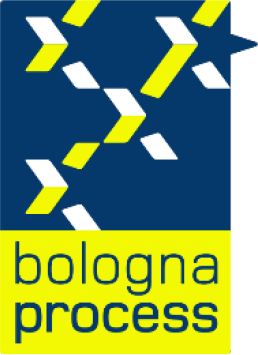Islamic Economics and Finance
Course Details

KTO KARATAY UNIVERSITY
İktisadi, İdari ve Sosyal Bilimler Fakültesi
Programme of Islamic Economics and Finance
Course Details
İktisadi, İdari ve Sosyal Bilimler Fakültesi
Programme of Islamic Economics and Finance
Course Details

| Course Code | Course Name | Year | Period | Semester | T+A+L | Credit | ECTS |
|---|---|---|---|---|---|---|---|
| 99701009 | Islamic Financial Systems | 2 | Autumn | 3 | 3+0+0 | 4 | 4 |
| Course Type | Elective |
| Course Cycle | Bachelor's (First Cycle) (TQF-HE: Level 6 / QF-EHEA: Level 2 / EQF-LLL: Level 6) |
| Course Language | Turkish |
| Methods and Techniques | - |
| Mode of Delivery | Face to Face |
| Prerequisites | - |
| Coordinator | - |
| Instructor(s) | Asst. Prof. Hüseyin ERGUN |
| Instructor Assistant(s) | - |
Course Instructor(s)
| Name and Surname | Room | E-Mail Address | Internal | Meeting Hours |
|---|---|---|---|---|
| Asst. Prof. Hüseyin ERGUN | C-Z12 | [email protected] | 7968 |
Course Content
This course covers the principles of faith, halal and haram, acts of worship, family life, commercial and economic life.
Objectives of the Course
The aim of this course is to enable our students to develop products in the field of Islamic Economics and Finance by teaching them the resources and terminology related to Islamic Law.
Contribution of the Course to Field Teaching
| Basic Vocational Courses | X |
| Specialization / Field Courses | X |
| Support Courses | |
| Transferable Skills Courses | |
| Humanities, Communication and Management Skills Courses |
Relationships between Course Learning Outcomes and Program Outcomes
| Relationship Levels | ||||
| Lowest | Low | Medium | High | Highest |
| 1 | 2 | 3 | 4 | 5 |
| # | Program Learning Outcomes | Level |
|---|---|---|
| P1 | İslam İktisadı ve Finans alanında kuramsal ve uygulamalı bilgilere sahip olma, sahip olduğu bilgileri kullanabilme | 5 |
| P2 | İslam İktisadı ve Finans alanında edindiği bilgi, beceri ve yetkinlikleri kullanarak meseleleri tanımlama, veri toplama, değerlendirme, analiz etme, yorumlama ve çözüm önerisi geliştirebilme | 5 |
| P3 | İslam İktisadı ve Finans alanıyla ilgili farklı bilgi kaynaklarına erişip sayısal analiz ve araştırma yapabilme | 3 |
| P4 | Disiplin içi, çok disiplinli veya çok kültürlü gruplarda ve bireysel çalışabilme | 4 |
| P5 | Ahlaki değerler ve mesleki sorumluluk bilinci ile hareket edebilme | 5 |
| P6 | Alan uygulamalarının, evrensel ve toplumsal etkileri ile hukuki sonuçlarını bilme | 3 |
| P7 | Öğrenim dilinde yazılı ve sözlü iletişim kurabilme, en az bir yabancı dil bilgisine sahip olabilme | 4 |
Course Learning Outcomes
| Upon the successful completion of this course, students will be able to: | |||
|---|---|---|---|
| No | Learning Outcomes | Outcome Relationship | Measurement Method ** |
| O1 | Explains the fundamental principles and historical development of Islamic economics. | P.1.1 | 1 |
| O2 | Applies Islamic finance and economic principles to solve current economic problems. | P.1.3 | 1 |
| O3 | Effectively communicates knowledge in Islamic economics and finance both orally and in writing. | P.1.6 | 1 |
| ** Written Exam: 1, Oral Exam: 2, Homework: 3, Lab./Exam: 4, Seminar/Presentation: 5, Term Paper: 6, Application: 7 | |||
Weekly Detailed Course Contents
| Week | Topics |
|---|---|
| 1 | Belief Principles and Sources of the Islamic Religion |
| 2 | Belief Principles and Sources of the Islamic Religion |
| 3 | Belief Principles and Sources of the Islamic Religion |
| 4 | Halal and Haram |
| 5 | Halal and Haram |
| 6 | Worship (Prayer) |
| 7 | Worship (Fasting) |
| 8 | Worship (Zakat) |
| 9 | Worships (Pilgrimage) |
| 10 | Family Life in Islam |
| 11 | Family Life in Islam |
| 12 | Economic and Commercial Life in Islam |
| 13 | Economic and Commercial Life in Islam |
| 14 | Economic and Commercial Life in Islam |
Textbook or Material
| Resources | Delilleriyle Ticaret Ve İktisat İlmihali-Hamdi Döndüren |
Evaluation Method and Passing Criteria
| In-Term Studies | Quantity | Percentage |
|---|---|---|
| Attendance | - | - |
| Course Specific Internship (If Any) | - | - |
| Homework | - | - |
| Presentation | - | - |
| Projects | - | - |
| Midterms | 1 | 40 (%) |
| Final Exam | 1 | 60 (%) |
| Total | 100 (%) | |
ECTS / Working Load Table
| Quantity | Duration | Total Work Load | |
|---|---|---|---|
| Course Week Number and Time | 14 | 3 | 42 |
| Out-of-Class Study Time (Pre-study, Library, Reinforcement) | 14 | 2 | 28 |
| Midterms | 1 | 20 | 20 |
| Quiz | 0 | 0 | 0 |
| Homework | 0 | 0 | 0 |
| Practice | 0 | 0 | 0 |
| Laboratory | 0 | 0 | 0 |
| Project | 0 | 0 | 0 |
| Workshop | 0 | 0 | 0 |
| Presentation/Seminar Preparation | 0 | 0 | 0 |
| Fieldwork | 0 | 0 | 0 |
| Final Exam | 1 | 30 | 30 |
| Other | 0 | 0 | 0 |
| Total Work Load: | 120 | ||
| Total Work Load / 30 | 4 | ||
| Course ECTS Credits: | 4 | ||
Course - Learning Outcomes Matrix
| Relationship Levels | ||||
| Lowest | Low | Medium | High | Highest |
| 1 | 2 | 3 | 4 | 5 |
| # | Learning Outcomes | P1 |
|---|---|---|
| O1 | Explains the fundamental principles and historical development of Islamic economics. | 3 |
| O2 | Applies Islamic finance and economic principles to solve current economic problems. | 5 |
| O3 | Effectively communicates knowledge in Islamic economics and finance both orally and in writing. | 5 |
